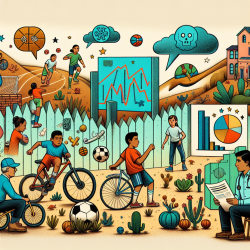Understanding First Impressions of Autistic Children: Insights for Practitioners
In the quest to foster inclusive environments for autistic children, understanding the biases and perceptions that non-autistic adults hold is crucial. A recent study titled "Negative first impression judgements of autistic children by non-autistic adults" sheds light on how these first impressions are formed and the factors influencing them. This blog explores the findings of this study and offers insights for practitioners to improve their interactions and support for autistic children.
The Study at a Glance
The research examined how non-autistic adults perceive autistic and non-autistic children through various audio-visual formats. Participants included 346 undergraduate students who rated 15 autistic and 15 non-autistic children on traits and behavioral intentions. The study found that autistic children were often rated more negatively, especially in conditions involving audio cues.
Key Findings
- Audio Cues Influence Perception: Autistic children were rated more negatively in audio-involved formats. This suggests that auditory characteristics, such as speech prosody, may influence perceptions.
- Visual Information Matters: Ratings were less negative in visual-only formats, indicating that non-verbal cues also play a role in shaping impressions.
- Rater Characteristics Impact Judgments: Higher social competence and explicit stigma in raters were associated with more negative ratings, while those with more autistic traits or positive past experiences with autistic individuals rated autistic children more favorably.
Implications for Practitioners
For practitioners working with autistic children, these findings underscore the importance of being aware of personal biases and how they might influence interactions. Here are some actionable steps:
- Enhance Autism Awareness: Educate yourself and others about autism to reduce stigma and improve understanding.
- Foster Positive Experiences: Engage in positive interactions with autistic individuals to reshape perceptions and reduce bias.
- Reflect on Personal Biases: Regularly assess your own biases and work towards minimizing their impact on your professional practice.
Encouraging Further Research
This study highlights the need for continued research into the factors influencing perceptions of autistic individuals. Practitioners are encouraged to engage with current research, contribute to studies, and apply evidence-based practices in their work.
To read the original research paper, please follow this link: Negative first impression judgements of autistic children by non-autistic adults.










